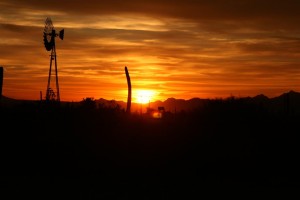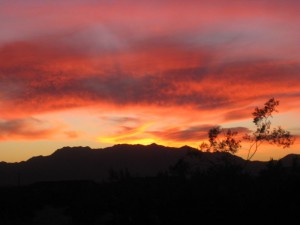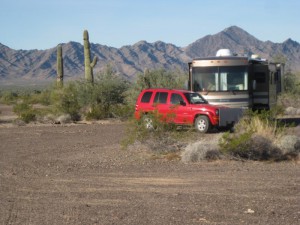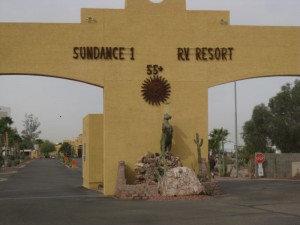Boondocking in the desert isn’t for everyone, but thousands of people enjoy it. A few tips for more comfortable and safer desert living are listed below.
1- Deserts cool down rapidly at night and warm up quickly in the sunlight. Take the necessary clothes with you, and be prepared to change them according to the temperatures.

2- In the winter time you are not likely to encounter nasty slithery creatures. Most of them are holed-up waiting for real warmth. Just the same, in case they haven’t read the rules, watch where you walk, and don’t reach into holes, or turn over rocks without being extra careful. You might even empty your boots before putting them on.
3- Don’t camp in creeks and washes. Distant rainstorms can turn them into fast flowing streams of mud.
4- Camp in sheltered areas to keep you out of dust kicked up by a windy afternoon.
5- Arrive with your water tanks full, and your holding tanks empty. Some Boondocking areas are visited by mobile sewage trucks, and potable water trucks, but not all. With full water tanks, and being very water frugal, we can manage for over 10 days before having to head for civilization.
6- Try to camp near other people so if you have a problem you will have someone to ask for help. But don’t camp so close you are neighbours. They are likely boondocking to get away from being really close to others.

7- Desert plants usually protect themselves with needles and thorns. Carry tweezers to help you remove them from your skin. The teddy bear cholla is a friendly looking plant until you get close then you can see its protective needles. If one latches onto you, don’t try to pull it off with your other hand. You’ve been warned! Instead, use a comb or a pair of sticks to pull it away from your skin. It’s very sharp!
8- Don’t go away and leave your awning up, unless it’s very well secured. Desert winds come up fast, and can move anything not fastened down.
9- If you plan on driving into the desert on the trails, tell someone where you are going and when you expect to return. Have a good map, and take water and food just in case the car has a breakdown. If that happens, stay with the car. A car is a bigger target to find than a human.

10- Install a house alarm system in the RV. Set it up so you can press a button to turn on the alarm. Noise will usually scare away prowlers.
11- Have outside lights on all sides or your RV, so you aren’t walking around to the back in the dark.

12- The most important suggestion is to use common sense. Anytime you are out in a large wilderness area there are hazards. You can fall, get lost, or a host of other calamities can happen to you. There are a few more hazards here than at home. You have to make careful decisions. Your life depends on it.
For more than four decades James Stoness has travelled the roads of North America, photographing and writing about what he has seen. His travel articles and beautiful pictures have been published in several magazines and newspapers. He is also the author of five western novels. Visit his website at: www.stonesstravelguides.com





